TREK revived the Top Fuel model two years ago to be the brand’s high performance XC/marathon race model, replacing the Super Fly 100. We got to spend a few weeks getting to know the current version of the brand’s storied racing model that has already powered its way to World Cup, Olympic and Cape Epic podiums in the past 18 months.
TREK never really left South Africa, in fact we’ve tested a few models over the years (we’ll gradually publish these online), but with the official importer changing numerous times over the past 15 years, the brand never quite became truly established. It would gain some momentum and then lose it. Then gain some, then lose it again. But that’s changed. TREK has now come into the country directly from its US base in Waterloo Wisconsin and is already starting to make an impact.
The proactivity of the brand so far has been impressive. But then there are really only a handful of brands in the country that are consistently proactive, so it was bound to be a standout quality. TREK has employed South Africans to manage the day to day running of the business here and they are a proactive, passionate group that have made pretty quick progress in just a few months. They didn’t just send us one model to test ride, they sent us three – the Fuel EX 9.8, Top Fuel 9.8 SL and Pro Caliber 9.6. We’ll publish reviews on all three over the next few weeks, starting with the Top Fuel 9.8 SL.

THE BIKE
You can’t get more understated than black everything. And that’s exactly what the Top Fuel 9.8 SL is. Matte black is the colour (with gloss black graphics). Stealthy, balanced and businesslike are how we’d sum up our first glance.
Carbon fibre is the frame material, except for the chainstays, which are alloy (just the chainstays though, not the full rear triangle). It uses the Full Floater suspension design, which sees the 100mm travel Fox Performance Float RE:aktiv shock vertically orientated and attached to the rear triangle via a carbon EVO rocker linkage. This is an update on the previous Top Fuel suspension design, which also had the rear shock mounted low and parallel to the seattube, but on 26-inch wheels. In terms of the TREK line-up, the Top Fuel replaces the Superfly 100, which took over as the XC/Marathon model for TREK with the introduction of 29-inch wheels back in 2012. The Superfly 100 had the rear shock mounted beneath the top tube.
On this suspension design, the rear pivot point rotates concentric to the rear wheel axle, which apparently helps isolate braking forces to ensure the suspension is active while braking.
The Top Fuel has a small chip inside the top seatstay pivot that’s reversible. It’s called Mino Link, which is a geometry adjustment that allows you to select from a lower, slacker position, with a 70-degree head tube angle and 33cm BB height, or a higher, steeper setting, with a 70.9 degree head tube angle and a bottom bracket height of 34.1cm. During other bike tests we’ve found other brands incorporating a similar system on their bikes.

Because of the incorporation of Boost in the design, the rear chainstays are wider and shorter (435mm) than the old Superfly 100 dimensions, which theoretically should offer a stiffer, more nimble ride.
We love the Control Freak feature, which is the modular internal cable routing system that can accommodate 1x, 2x, dropper post and remote shock lockout cables through a variety of combinations (54 combos according to TREK). Plus it’s compatible for Di2 cables and battery.
The fork is Fox’s Performance Float 32 with step-cast stanchions. Also in matte black (yum).
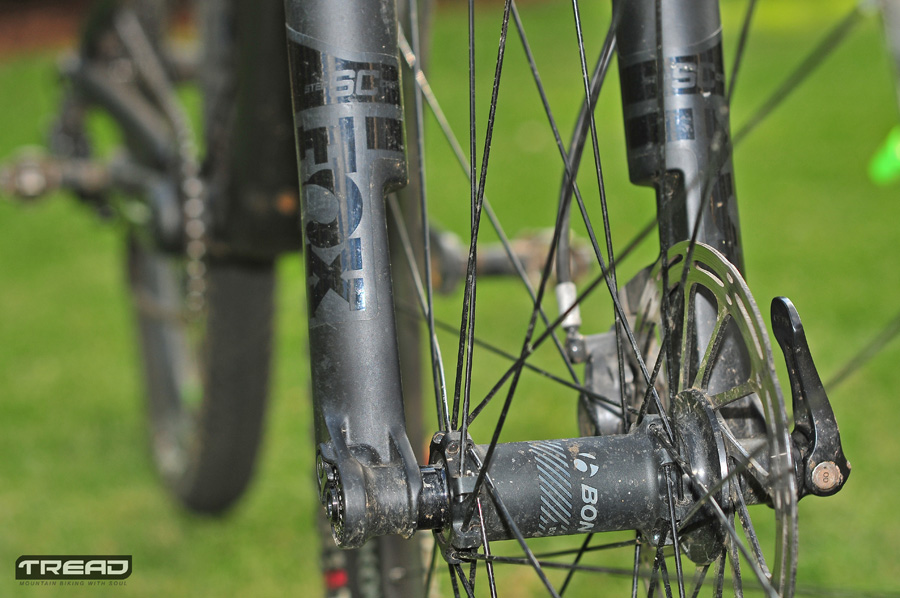
Trek uses a remote simultaneous front/rear suspension adjustment called Full Sprint on the Top Fuel 9.8 SL. It’s cable-actuated and uses a fairly soft looking/feeling lever that locks the two shocks out with a thumb push. Or opens them up, depending on what you require at the time.
The wheelset is Bontrager’s Kovee Pro TLR – carbon rims, Boost hubs (148mm rear, 110mm front) with Bontrager XR1 Team Issue tyres (29×2.20).
The drivetrain is all SRAM – X1 11-speed (32-tooth chainring 10-42 cassette) and the components are all Bontrager Race Lite or Pro or Race X Lite. The brakes are SRAM Level TLM hydraulic disc.
It’s undoubtedly a high-end, high-quality bike. It’s also beautiful to look at.

THE RIDE
It’s been a while since we test rode a TREK marathon/XC bike. Checking our archives, it was in April/May 2013 when we rode the Old Mutual joBerg2c on a TREK Superfly 100 Elite SL and a TREK Superfly 100 AL Elite. Basically, the aluminium version and the carbon version of the same bike. The main difference on the Top Fuel is the suspension design. The incorporation of Boost (wider) axles as well as modern carbon layup techniques have allowed bike brands to relook at suspension positioning as frame widths can also be made wider without major weight penalties.

The first thing that struck us was the snappy acceleration. Normally this isn’t super evident, but it was on this bike. A few seconds of hard pedaling and you can immediately feel that this bike was designed for speed. Here’s the thing though. We found it to not only be very snappy when the suspension is locked out, but very responsive when it’s open… In fact, we only really felt the need to lock it out on bits of tar. Where this snappiness comes in very useful is when you’re accelerating out of a tight turn or having to suddenly power over/across an obstacle in the trail.
This kind of suspension efficiency is great when climbing. We rode the Top Fuel 98.SL on trails in three provinces (Gauteng, KZN and Western Cape) and rode it at Afriski, Lesotho too. The climbing agility is superb. It maintains traction on steep rough and/or loose climbs that gives you confidence to stand and pedal from time to time. On our local steep, rough climbs at Thaba Trails, where we like to compare our test bikes, the Top Fuel 9.8 SL was a star performer. Obviously bike weight is also a factor on climbs, but at a relatively svelte (10.80kg) the Top Fuel 9.8 SL has no issues here.
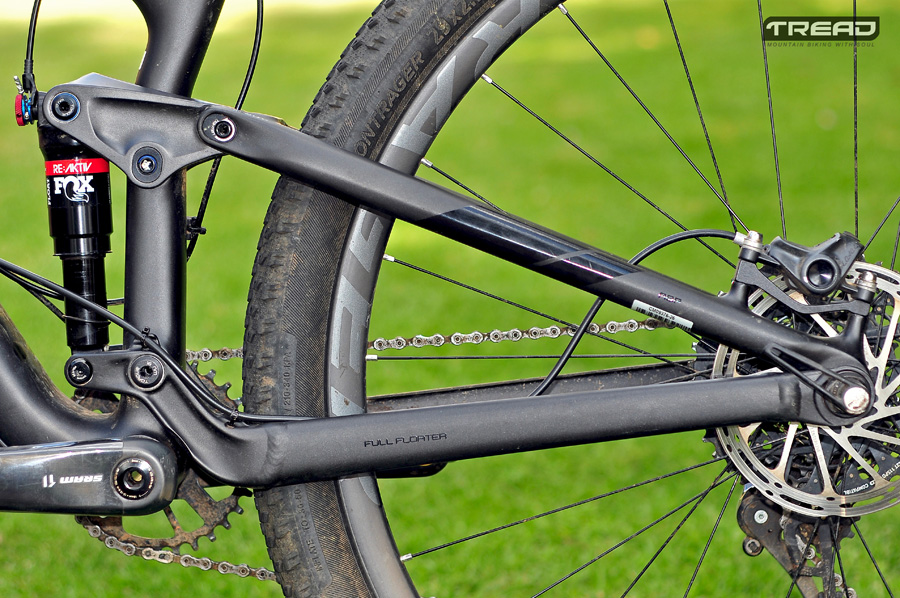
You can’t really ask for better descending trails to test a bike on than those at Afriski. There must be eight different descents from the summit, varying in steepness and difficulty. We took the Top Fuel down all but the most gnarly of them and felt confident. Look some of those trails are so steep that it becomes almost purely a test of rider nerve and braking power. The 160mm rotors were pushed to their limits by our riders there, but the bike behaved. And this is where the rear suspension design was put to a solid test. Braking while hitting rocks, ruts and bumps can compromise suspension action. But the Top Fuel never felt compromised and allowed us to descend without throwing up any surprises.
We were obviously more comfortable on the TREK Fuel EX (that review is still to come) which is more suited to descending fast. We also used the opportunity to compare the two types of bikes (also in an upcoming article)…
Cornering confidence is key on any bike and usually something that’s noticeable on XC/Marathon bikes where steeper geometry brings your default weight forward. This is where the fork and tyre influence is very noticeable. We felt very confident on corners, especially fast, firm singletrack turns where bike trust is critical. We’ve always been fans of Bontrager tyres and the XR1 Team Issue rubbers have earned our respect. They’re fast-rolling and relatively light, but not super grippy (the XR 2 is more grippy with larger knobs).
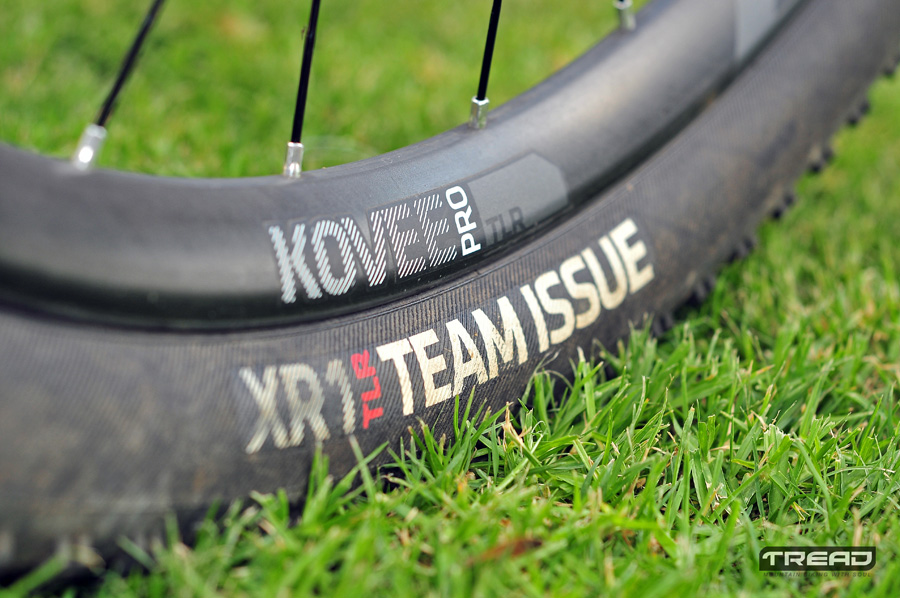
We never had one hole or tear in the XR1s in six weeks of hard riding, which is pretty impressive considering the variety of terrain we tackled.
So, there’s a lot we really like about the Top Fuel 9.8SL. And some things we love. But there are a few things that are worth mentioning that aren’t necessarily negative, but important.
We feel the handlebar is a bit narrow for our liking. A 700mm bar on a modern bike just feels a bit inadequate at times, we’d rather the option of a wider bar that could be cut to personal preference and fit.
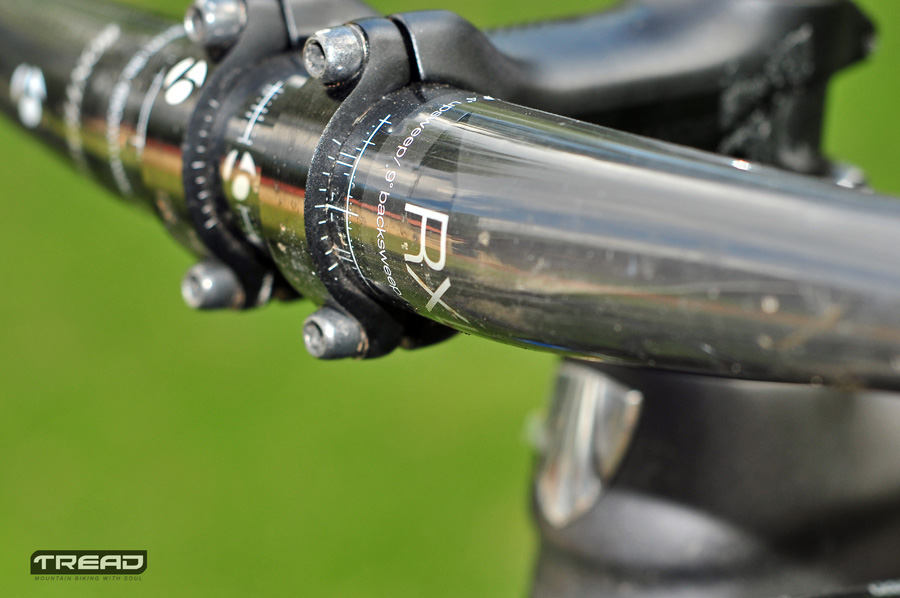
There is only space for one bottle cage on the frame. In South Africa, this is an important feature. Hot, dry weather, stage races, marathons and the increasing popularity of ultra-endurance mountain bike events all require more liquid storage. TREK isn’t the only brand that has one bottle cage mount on the frame though, so it’s not unique but does compel the rider to seek other liquid carrying options.
It’s mainly aesthetic, but the way the rear shock adjuster cable sits wasn’t ideal. We’ve since discovered that it was just a hasty set-up from the bike shop we collected the bike from and that some fine-tuning of the cable length makes the cable loop look less obvious, but still a touch awkward.
While the Full Sprint lever worked fine in locking or activating the suspension, it felt rather fragile/soft and not quite as solid a switch as we’ve come to trust on high-end bikes. It’s certainly something that TREK should look at for subsequent models.
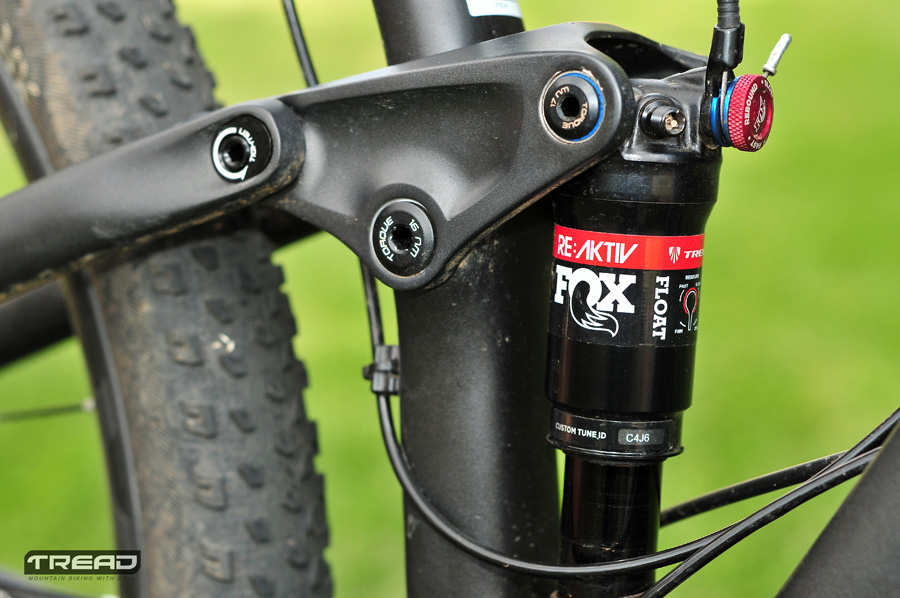
THE VERDICT
The TREK Top Fuel 9.8 SL is undoubtedly a high-performance machine! It also confirms that responsive, fast accelerating full-suspension XC/marathon bikes can also be comfortable, which is important if you’re a stage racer or long-distance riding fanatic. The parts spec is reliable and spot on and the price is reasonably relative for what you’re getting. The single bottle cage may be an issue for some, but in terms of performance, the Top Fuel 9.8 SL is superb and certainly holds it’s own among the best full suspension XC/marathon bikes we’ve tested.
RRP: R84 999
Riding: XC-MARATHON-TRAIL-FREERIDE
Rider: RECREATIONAL-COMMITTED-PERFORMANCE
Score: 9/10
Find the full spec here: TREK Top Fuel 98.SL


All rights reserved.


